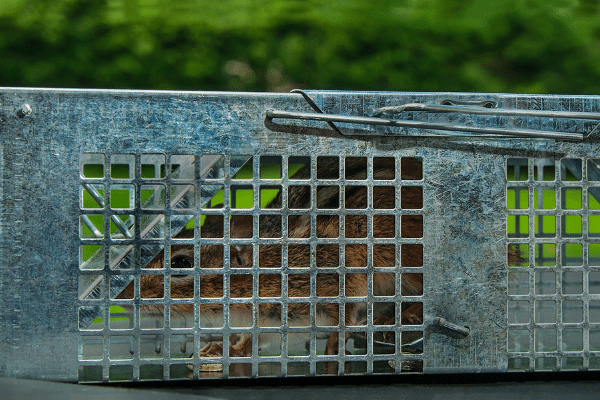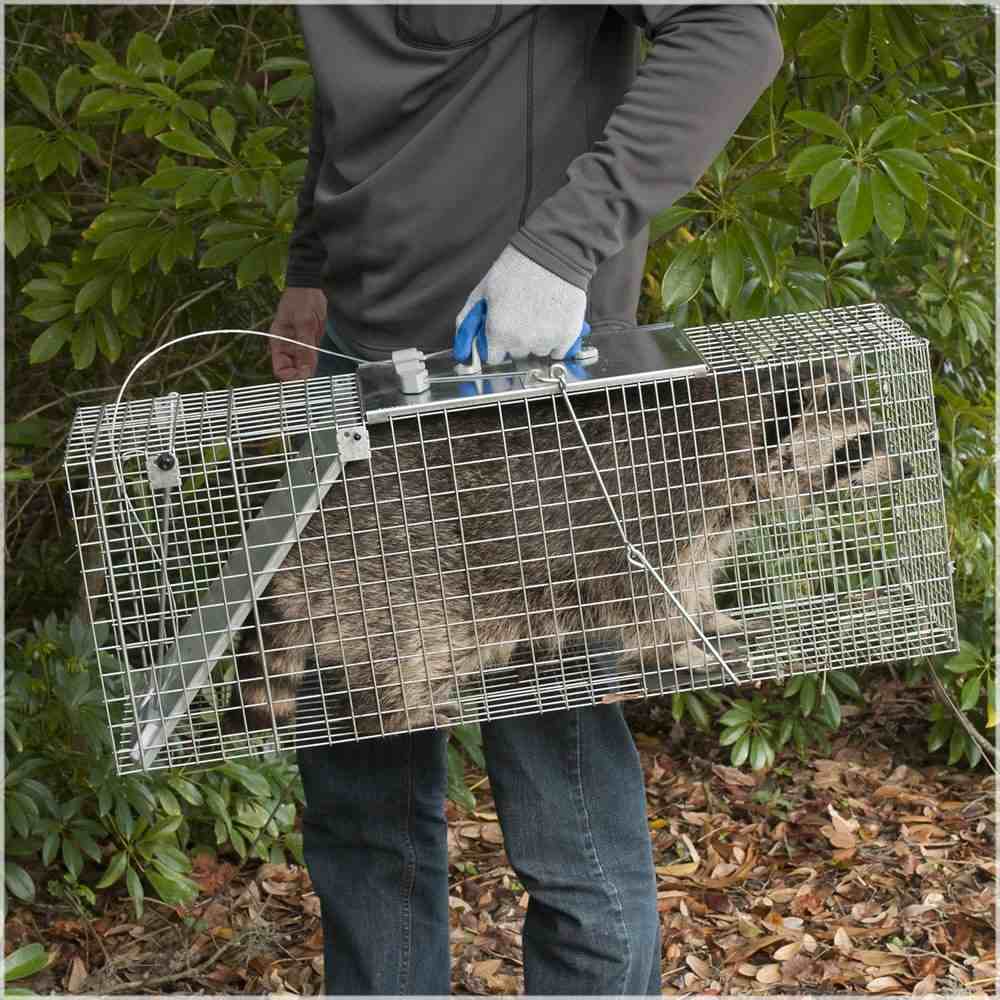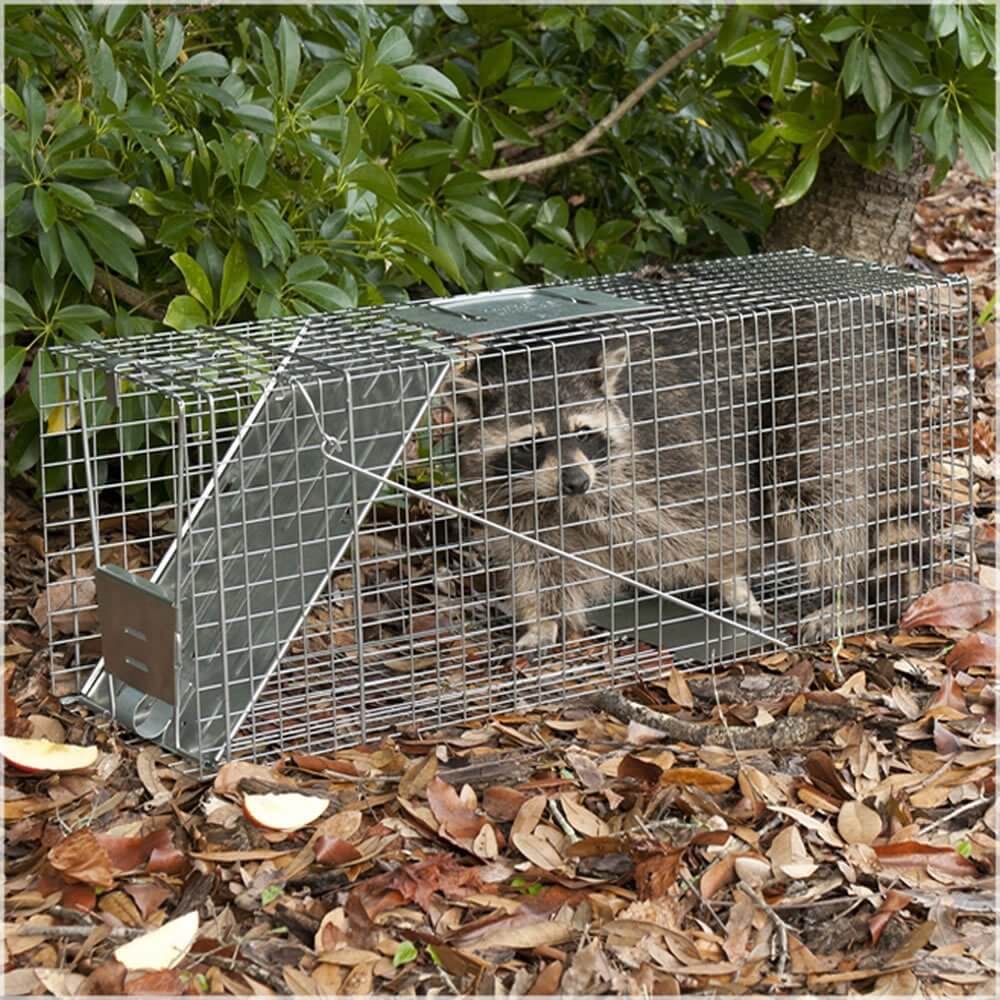Live Animal Trap
This post may contain affiliate links so I earn a commission.
The live animal trap is a great, humane way to trap a variety of different animals.
Their simple design and easy to use features make the trap a practical choice for almost everyone.
Why are they so popular?
They're simple to use and they're affordable!
You don't have to be an expert trapper to have success with a live trap, and you don't have to worry about injuring a neighborhood pet with an accidental catch.

In fact, most people who own and use a live trap have never used a foothold, or a body gripping trap before.
A majority of people, including pest control experts, use them to safely catch and relocate nuisance animals such as raccoons, groundhogs, opossums, squirrels or feral cats.
We've all been plagued with a raccoon that's getting into a garbage can, a skunk that's digging up our lawn in search of food, or a squirrel that won't stay out of your bird feeder.
Instead of resorting to lethal traps, poisons or harmful techniques, a live trap can offer the perfect solution to get rid of an unwanted animal making your house, their new home.
So, here's the best part.....why pay an expert to catch a nuisance animal when you can do it yourself?
With a live trap it's easy!
How They Work
The concept of the trap is pretty simple, the cage is constructed of rust resistant galvanized steel that lasts for years.
The cage has either one or two doors depending on the model.
The open doors are attached to a pan trigger that activates when the animal steps on it.
Once activated, the door/doors close and the animal is safely trapped inside.
Trap manufactures, like Havahart have even developed a system that allows you to set the trap or release a trapped animal with one pull of a lever.
This is really convenient when you have an agitated animal inside the trap, like a raccoon or skunk.
The lever allows you to keep your hand safely away from the animal when you open the trap door to release it.
The inside of the cage has smooth edges and a study door lock that keeps the animal safely inside until you're ready to relocate it.
The trap should also have a hand guard on top that protects you from the animal, and allows you to safely carry the trap and animal to a new location.

If you're interested in purchasing a live animal trap you will find there are several manufactures that produce them.
I own several different makes and models but my favorite is made by Havahart.
The company has been producing traps for over 60 years and the trap quality is remarkable.
I have owned my Havahart live animal trap for at least 15 years, and it still works perfectly.
The are available in several different makes and models, so shop around and choose the size and model that fits your intended purpose.
Havahart will have a trap size recommendation for the animal you're trying to catch.
For example, you'll want to use a smaller sized trap for squirrels, and larger traps for raccoons and skunks.
Choosing The Best Bait For Your Live Animal Trap
Using the correct bait will help increase your catch rate, so here are a few popular baits to use in your live trap for common nuisance animals:
Armadillo Bait - Mealworms, maggots or sardines
Feral Cat Bait - Fish, sardines or canned tuna
Chipmunk Bait - Sunflower seeds, corn, peanut butter or popcorn
Groundhog Bait - Fresh vegetables, sweet corn, vanilla extract, peas
Opossum Bait - Canned cat food, vegetables, crisp bacon or sardines
Porcupine Bait - Apples, salt or carrots
Rabbit Bait - Apples, carrots, fresh vegetables
Raccoon Bait - Canned cat/dog food, sweet corn, marshmallows, fish

Raccoons are notorious for ripping up the ground and pulling grass and brush into the cage after they have been captured.
To prevent this you can place the trap on a piece of thin plywood if you need to protect your yard.
Just make sure the trap is level and does not rock back and forth when the animal walks inside.
An unstable trap will typically spook the animal causing it to run away before it fully enters the trap.
If the nuisance animal is stealing your bait and the trap does not trip, try placing the bait in a different position or even tie it to the ceiling of the trap above the trap pan so the animal has to stand on the pan to reach the bait.
Live Animal Trap - Overall
The live animal trap is an easy and effective way to capture a variety of different animals.
From trapping armadillos to removing an unwanted groundhog, a live trap is great tool that anyone can master.
They're easy to use, and even the most novice trapper or homeowner can use one to safely remove an unwanted pest from your home, barn or garden.



